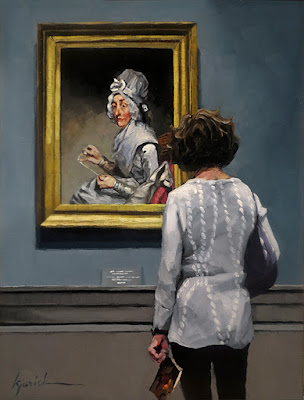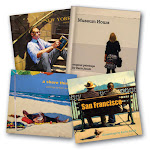6 x 8"
oil on panel
sold
As I finished this new painting, I realized outside the cold wind was blowing and snow flurries were falling on Christmas Eve in Atlanta. Truly unexpected. And pretty darn cozy. John Singer Sargent's Carnation, Lily, Lily, Rose - a most perfect painting in my opinion, depicts a warm, summer night - completely opposite of the evening outside my window.
In 1884, Sargent had just experienced a scandal in Paris, resulting from the exhibition of his famous portrait Madame X. It damaged his reputation all because the critics freaked out over the dress strap of Amelie Gautreau had fallen off her bare shoulder. That was it. The prudes disapproved.
Seeking restoration, Sargent moved to England and spent summers in an artist's colony, where he completed Carnation, Lily, Lily, Rose. He was staying at the home of his artist friend Francis Millet and the two girls he used as his models were the daughters of another artist Frederick Barnard. His inspiration came from a boating trip where he saw Chinese lanterns hanging in the trees, combining that element with the girls.
The painting was a hit at an 1887, and Sargent was once again the talk of the art world with his reputation restored. It belongs to the collection of the Tate Museum in London, England.
~ Wishing you and yours a peaceful and beautiful Christmas holiday.









































